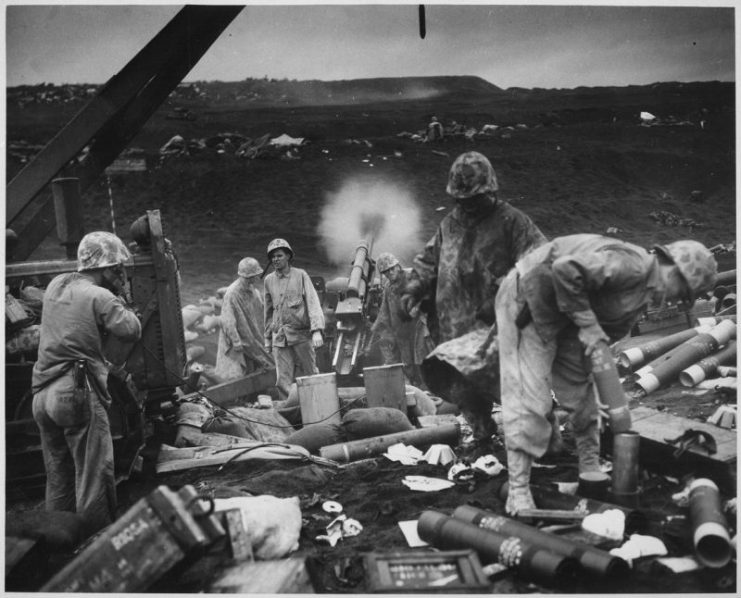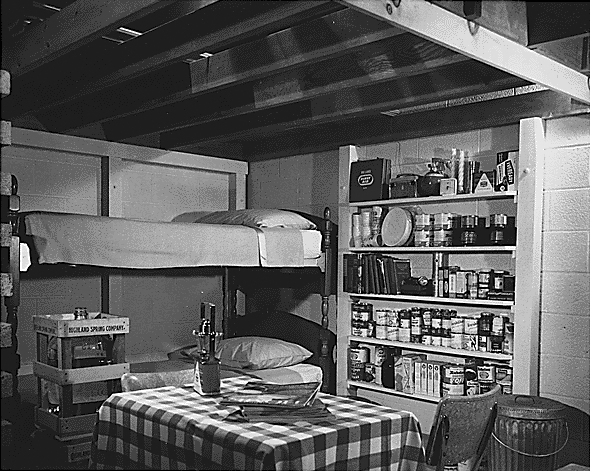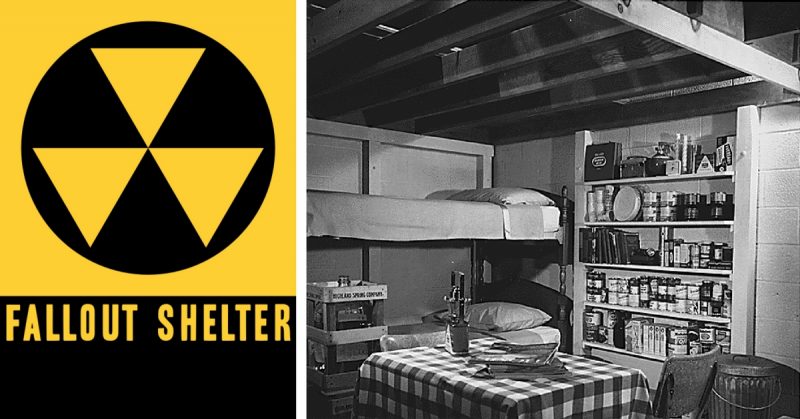The man who had an unusual job for a short period died recently at the age of ninety-five. Robert W. Blakeley was a logistics official in the US Army Corps of Engineers and a veteran of WWII and the Korean conflict. He was the creator of the yellow and black sign that designated fallout shelters at the pinnacle of the Cold War.
Blakeley was born on August 30, 1922, in Ogden, Utah. In WWII he fought with the Marines at Iwo Jima, and during the Korean War was one of the “Chosin Few” who overwhelmed Chinese forces at the Chosin Reservoir in one of the decisive battles of that war.
At the University of California, he studied architecture and graduated in 1954 with a master’s degree in business administration. He joined the Army Corps of Engineers in 1956 and remained with them until his retirement in 1981. From 1958, he was also heavily involved with Toastmasters International, a public speaking organization.
After the end of WWII, Central Europe was carved up between democratic countries and those run by communism. The Soviets had fought alongside the United States in WWII, but Josef Stalin, the leader of the Soviet Union, was a ruthless dictator. He ignored all promises he had made at the Conferences at Yalta and Potsdam at the end of the war. To the rest of the world, it seemed that Stalin could easily become the next Hitler.

During the summer of 1961, over sixty thousand people fled from East Berlin to escape communism. To put a stop to the defections, the then leader of the Soviet Union, Khrushchev, closed the border with a concrete wall topped with barbed wire.
The tension between the United States and the Soviet Union intensified, as the Soviets began developing atomic weapons. The two countries entered into a dreadful contest to see which could build the most powerful weapon of destruction.
Both Soviet and United States propaganda fueled the public fear of nuclear war and the nearby location of Cuba, a communist-led country, convinced Americans that a nuclear confrontation was imminent.
School children practiced bomb drills. Students filed into hallways and corridors with instructions to lean facing the lockers and cover the back of their necks with one arm and their eyes with another – as this writer experienced. People began building bomb shelters in their backyards, stocking them with food, water, and other items in an attempt to stay safe in the event of a nuclear explosion. Pre-fab bomb shelters became a booming business.

For those who did not have the resources or space to construct a bomb shelter, large cities designated areas for the public to hide. Due to the dangerous lack of knowledge regarding nuclear weapons and their effects on the planet, scientists informed people they would be confined for only a short time, and could then continue life as usual. Each shelter was required to have a sign indicating it as such. Bob Blakeley was assigned the task of creating those signs.
It became a family effort, as Blakeley enlisted the help of his children. They needed distinctive, yet easy to understand graphics and the signs had to be sturdy, with the ability to be attached to any surface. They needed to be reflective, as it was assumed that electricity would be out. Blakeley created the yellow and black three triangle design and a mockup was produced. Blakeley’s children were instructed to stomp on, throw mud at and generally manhandle the signs.
The design worked and was presented to the Pentagon, where it was approved. 3M was assigned to construct the signs and they were displayed on buildings considered suitable places to take cover.
After Premier Mikhail Gorbachev took office in 1985, communism began to disappear from Russia. The Union of Soviet Socialist Republics was disbanded, and the Berlin Wall came down. The Cold War was essentially over.
Blakeley’s now faded signs can still be seen in larger cities, most notably New York, as a reminder of the dark times when the world was on the brink of disaster.
